1916 Republican National Convention
The 1916 Republican National Convention was held in Chicago from June 7 to June 10. A major goal of the party's bosses at the convention was to heal the bitter split within the party that had occurred in the 1912 presidential campaign. In that year, Theodore Roosevelt bolted the GOP and formed his own political party, the Progressive Party, which contained most of the GOP's liberals. William Howard Taft, the incumbent president, won the nomination of the regular Republican Party. This split in the GOP ranks divided the Republican vote and led to the election of Democrat Woodrow Wilson. Although several candidates were openly competing for the 1916 nomination—most prominently conservative Senator Elihu Root of New York, Senator John W. Weeks of Massachusetts, and liberal Senator Albert Cummins of Iowa—the party's bosses wanted a moderate who would be acceptable to all factions of the party. They turned to Supreme Court Justice Charles Evans Hughes, who had served on the court since 1910 and thus had the advantage of not having publicly spoken about political issues in six years. Although he had not sought the nomination, Hughes made it known that he would not turn it down; he won the presidential nomination on the third ballot. Former Vice President Charles W. Fairbanks was nominated as his running mate. Hughes is the only Supreme Court Justice to be nominated for president by a major political party. Fairbanks is the last former vice president, to be nominated for vice president.
| 1916 presidential election | |
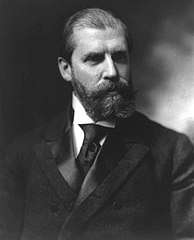  Nominees Hughes and Fairbanks | |
| Convention | |
|---|---|
| Date(s) | June 7–10, 1916 |
| City | Chicago, Illinois |
| Venue | Chicago Coliseum[1] |
| Candidates | |
| Presidential nominee | Charles E. Hughes of New York |
| Vice presidential nominee | Charles W. Fairbanks of Indiana |
Then-Senator Warren G. Harding is credited with coining the phrase "Founding Fathers" during his keynote address.
Presidential candidates
At the start, Supreme Court Justice Charles Evans Hughes was widely seen as the favorite due to his ability to unite the party, though the nomination of a dark horse candidate such as Massachusetts Senator Henry Cabot Lodge or General Leonard Wood seemed possible.[2] Many Republicans sought to nominate a candidate palatable to Theodore Roosevelt in hopes of averting another third-party run by progressive Republicans, though these Republicans were unwilling to nominate Roosevelt himself.[2] Roosevelt's influence put a stop to the potential presidential candidacies of former Ohio Representative Theodore E. Burton and Ohio Senator Warren G. Harding.[2] Former Vice President Charles Fairbanks made a run at the presidency and attempted to curry Roosevelt's support, but Roosevelt refused to support Fairbanks.[3] Hughes won the nomination on the third ballot, and Roosevelt chose to forgo a third-party bid.

Associate Justice
Charles Evans Hughes
of New York
Former Senator
Elihu Root
of New York
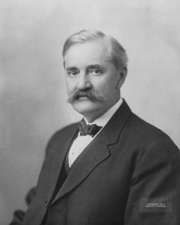
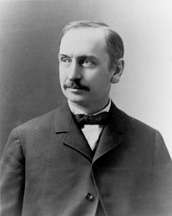
Former Representative
Theodore E. Burton
of Ohio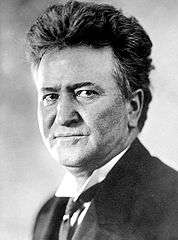

Withdrew during balloting
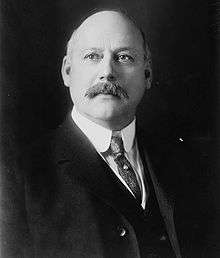
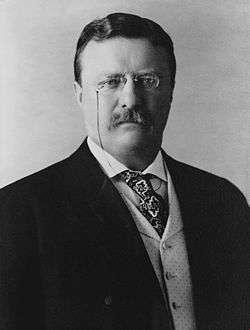
Former President
Theodore Roosevelt
of New York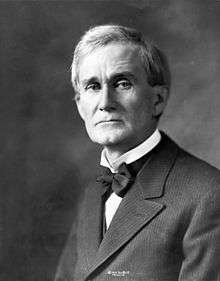
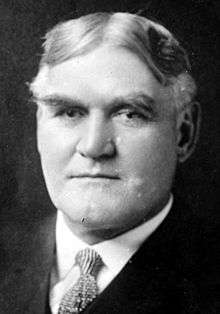
Governor
Martin G. Brumbaugh
of Pennsylvania
Balloting results
There were three ballots:


| Ballot | 1 | 2 | 3 |
|---|---|---|---|
| Charles Evans Hughes | 253.5 | 328.5 | 949.5 |
| John W. Weeks | 105 | 79 | 3 |
| Elihu Root | 103 | 98.5 | 0 |
| Charles W. Fairbanks | 74.5 | 88.5 | 0 |
| Albert B. Cummins | 65 | 85 | 0 |
| Theodore Roosevelt | 85 | 81 | 18.5 |
| Theodore E. Burton | 77.5 | 76.5 | 0 |
| Lawrence Yates Sherman | 66 | 65 | 0 |
| Philander C. Knox | 36 | 36 | 0 |
| Henry Ford | 32 | 0 | 0 |
| Martin Grove Brumbaugh | 29 | 0 | 0 |
| Robert M. La Follette | 25 | 25 | 3 |
| William Howard Taft | 14 | 0 | 0 |
| T. Coleman du Pont | 12 | 13 | 5 |
| Henry Cabot Lodge | 0 | 0 | 7 |
| John Wanamaker | 0 | 5 | 0 |
| Frank B. Willis | 4 | 1 | 0 |
| William Borah | 2 | 0 | 0 |
| Warren G. Harding | 0 | 1 | 0 |
| Samuel W. McCall | 1 | 1 | 0 |
| Leonard Wood | 0 | 1 | 0 |
| Absent | 2.5 | 2 | 1 |
Vice Presidential candidates
Former Vice President Charles Fairbanks had no interest in serving another term as vice president, but when the party nominated him, he accepted the nomination.[5]
Balloting results
| Ballot | 1st |
|---|---|
| Charles W. Fairbanks | 863 |
| Elmer E. Burkett | 108 |
| William E. Borah | 8 |
| William G Webster | 2 |
| Theodore E. Burton | 1 |
| Hiram W. Johnson | 1 |
| Absent | 4 |
See also
- History of the United States Republican Party
- List of Republican National Conventions
- U.S. presidential nomination convention
- Republican Party presidential primaries, 1916
- 1916 United States presidential election
- 1916 Democratic National Convention
References
- "Republicans to Meet in Historic Hall," The New York Times, May 30, 1920
- "Hughes Movement Gains Strength With No Dark Horse Yet In Sight; Dickering With Moose Fruitless". New York Times. 7 June 1916. Retrieved 9 October 2015.
- "Hughes Accepts Republican Nomination for President; Declares for Upholding American Rights on Land and Sea; Roosevelt, Named by Moose, Declines; He's 'Out of Politics'". New York Times. 11 June 1912. Retrieved 9 October 2015.
- Hart, George L (1916). Official Report of the Proceedings of the Sixteenth Republican National Convention: Held in Chicago, Illinois, June 7, 8, 9 and 10, 1916, Resulting in the Nomination of Charles Evans Hughes, of New York, for President and the Nomination of Charles Warren Fairbanks, of Indiana, for Vice-president. Tenny Press.
- "Charles Warren Fairbanks, 26th Vice President (1905-1909)". US Senate. US Senate. Retrieved 9 October 2015.
External links
- Republican Party platform of 1916 at The American Presidency Project
- http://politicalgraveyard.com/parties/R/1916/index.html
| Preceded by 1912 Chicago, Illinois |
Republican National Conventions | Succeeded by 1920 Chicago, Illinois |
